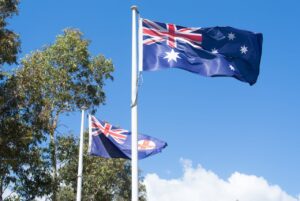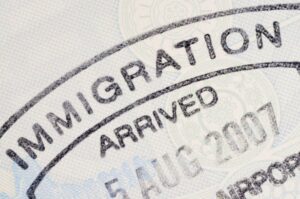Living in Australia: Is it Expensive or Not as Much as They Say?
If you’re considering living in Australia or simply visiting and want to know more about its lifestyle, this guide will help you answer all your questions. You’ve probably heard about the high salaries paid in Australia, but in this blog, we will take a look at the expenses and the cost of living to answer a question many students ask us: Is living in Australia expensive or not as much as they say?
This is one of the most frequent questions when making the decision to travel to Australia, but we advise you to take into account the cost of living/income ratio, which is very important when making an economic analysis. If the calculations are made in the local currency of the country of origin, it will seem like living in Australia is expensive. However, to better understand this, let’s analyze the costs in relation to:
- How expensive is accommodation?
- Food: How much does it cost to eat in Australia?
- Transportation: How much does it cost?
- Entertainment: How expensive is it to have fun in Australia?
- Is living in Australia expensive?
Cost of Living in Australia 2024
Housing Expenses
The cost of housing in Australia varies depending on several factors, which can be summarized as: location and privacy.
The closer the housing is to central areas, the more expensive the rent will be. Similarly, if you share a room with others in the same apartment, or if you even share a room with more people, the cost can be lower.
It is common for people to share space when they first arrive in Australia to save money, and later, they may find better living arrangements for more comfort. Sharing a flat is one of the best options to make living in Australia more affordable, and it will also help you meet new people. Creating a community is very important when you arrive in Australia, as it will not only allow you to enjoy going for a beer in one of the many bars in Australian cities, but also help you create connections to find a job, practice English (if you don’t share with Spanish speakers), and most importantly, it will help you not feel alone during this experience. That’s why we recommend sharing a flat in Australia as one of the most effective options so you don’t feel like living in Australia is as expensive as people say. Rent prices vary, but the average is approximately AUD 200 per week, though you can also find rentals starting from around AUD 170.
If you’re coming with your partner, sharing an apartment could also be a great idea, as there are also double rooms available for rent (many with private bathrooms). However, if you’re looking for more privacy and want to rent an apartment for just the two of you, prices start at about AUD 500 per week.
Seeing these prices, you might think living in Australia is expensive, but once you start working, you’ll realize that housing costs are reasonable.
How much do you spend on food?
The cost of food varies depending on individual eating habits and customs, but generally, the most affordable and common option among students is to shop at supermarkets and cook at home. There are two supermarkets that are the most economical for shopping: Coles and Aldi. Australia is a country with high prices, but there are constantly discounts of up to 50% off. Therefore, it’s recommended to keep track of the weekly offers from major supermarket chains (Coles, Aldi, and Woolworths). If you’re heading to Sydney, we also recommend visiting the Paddy’s Market at 5 PM to buy fruits and vegetables at the best price.
You should estimate a food shopping expense of approximately 50 AUD per week per person.
If you eat out every day, living in Australia can get expensive. In different cities, you’ll find fast food or sushi rolls starting from AUD 5, but typically, a lunch will range from AUD 10 to AUD 20. So, if you want to save or don’t want to spend too much, we advise cooking at home.
Transportation, how much does it cost?
It’s important to mention that public transportation in Australia is very efficient, so it’s not a headache when you need to use public transport such as buses, ferries, metro, trains, or light rail. For example, in Sydney specifically, the maximum amount you can spend in a week is 50 AUD, after which your trips will be free for the rest of the week.
It’s also rare to spend more than AUD 50 weekly. A metro ticket costs around AUD 2.50 during off-peak hours and AUD 3.60 during peak hours in Sydney. While the single ticket may seem a bit expensive at first, using your Opal card means that after your eighth trip in the same week, your tickets will be half-price. Another benefit is that on Sundays, you can travel freely on Sydney’s transport system for just AUD 2.50 for the whole day. When calculating the cost of living in Australia, we recommend budgeting the maximum for transport to have an upper-limit scenario.
Another viable option is to use a bicycle, as cities are generally equipped with special lanes for cyclists, and the cost is completely free and environmentally friendly.
#UvisionTip: The cost of transportation in Sydney depends on various factors, one of which is the distance. Therefore, you must register your entry and exit with your card (where you start your trip and where you end it). Otherwise, the maximum fare will be charged to your card as a penalty.
Fun and Entertainment
In addition to basic survival expenses, you should consider the costs for fun and entertainment. It’s important to remember that around where you live, there are many activities to do, such as eco walks, visiting beaches, and exploring parks, which are great and budget-friendly options.
Moreover, Australia’s cultural diversity offers various types of parties and events with different budgets. It’s also common to gather at friends’ houses, sharing meals and drinks as part of the cultural exchange experience.
#UvisionTip: In Sydney, public transport trips on Sundays have a maximum cost of 2.80 AUD, making it a great day to explore beaches and magical places.







